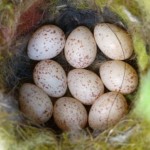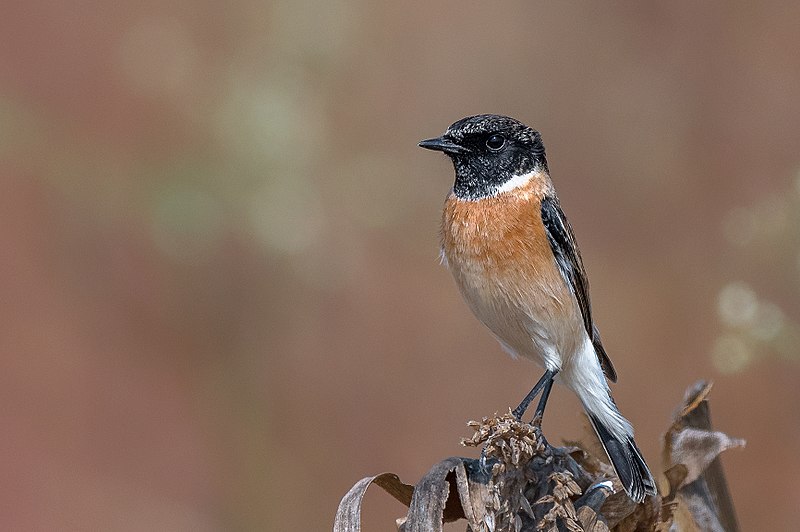#BOU2023 – Resources
 Evolutionary responses
Evolutionary responses
4-6 April 2023
Attendee resources
FULL PROGRAMME (In-person and Twitter presentations)
ALFRED NETWON LECTURE & KEYNOTE PRESENTERS
WORKSHOPS
WORLD CLOCK including UTC time conversion for your local time (for those following on Twitter)
Presenter resources
TWITTER PRESENTER GUIDELINES
HOW TO PREPARE A TWITTER THREAD
BE COLOUR BLIND AWARE
CODE OF CONDUCT
Conference theme, aims and scope
We are living in a time of rapid environmental change, where humans are altering the climate and transforming land cover. These anthropogenic changes are occurring worldwide and at unprecedented rates, with pervasive and irreversible consequences on biodiversity. This is particularly visible in avian communities, which may respond to human pressures in a variety of ways. In fact, while these environmental changes have resulted in the declines and losses of some birds, other species may be able to cope or even thrive in changing environments. Adaptation is a potential mechanism that could allow species to persist in the face of environmental change (i.e. ‘evolutionary rescue’). Rapid evolutionary responses of birds to environmental change can be seen in, for example, changes in beak size and shape in response to bird feeders; changes in migration timing in response to climate change; or resistance to novel and emerging pathogens. But evolutionary responses may be limited by, for example, low adaptive potential, plasticity, or using ‘wrong’ environmental cues. Furthermore, species may differ in their responses to environmental change, resulting in de-coupling of species interactions. Understanding which populations and species may be able to adapt fast enough, and under which conditions, is essential for predicting how birds, as well as the ecosystems they inhabit, will respond to future environmental changes.
This conference will bring together researchers, students and conservation practitioners from across the globe to discuss and share high quality research and cutting-edge ideas in how species could respond to change. The conference aims to encompass both observed rapid evolutionary responses, evolutionary potential, as well as observed lack of rapid evolutionary response or limits to the ability to respond.
The conference will aim to cover the following topics:
- Evolution of phenology;
- Species interactions;
- Movement and space use;
- Evolutionary responses to pollution;
- Evolutionary responses to emerging/novel pathogens;
- Non-genetic inheritance;
- Evolutionary responses to invasive species;
- Evolutionary responses to urbanisation and other anthropogenic land-use changes.

Covid safety
We have adopted a number of measures for BOU2023, intended to maximize covid safety at the conference.
- We request that delegates take a Covid-19 rapid lateral flow test within 48-hours before arrival at the conference.
- We will make hand sanitiser available in meeting and dining spaces.
- We will have surgical masks freely available at registration, for those that wish to wear them. Delegates are asked to respect the choice of others when it comes to mask wearing.
- We will consider a 50% refund for anyone unable to attend the in-person conference following a positive Covid-19 test.
- The lecture theatre, although enclosed, is spacious and allows for delegates to space out.
- Outdoor space is available for delegates to take some fresh air, should they wish, at any point during the conference. This includes access to outdoor space from meeting and dining spaces.
Our parallel conference format
The BOU strives to make all our events inclusive and accessible. To help achieve this we now run all in-person and virtual Zoom conferences as dual platforms events with a Twitter conference running alongside the main in-person/virtual event.
Every presenter at a in-person/virtual event will now be required to tweet a summary of their presentation as part of the parallel Twitter event. We will also include additional Twitter-only presentations during the breaks of the in-person/virtual event.
For example, our BOUsci20 virtual Zoom event attracted an ‘in-the-room’ audience of 375 registrants, but the parallel Twitter event had over 550 participants, an ‘in-the-room’ audience of >1,600 people and a wider reach of 750,000 – from right around the world.
Unlike other social media platforms, Twitter is genuinely open access as you don’t even need an account to follow the Twitter event content. The BOU knows Twitter inside out having championed its use to promote ornithological research for the last decade and we’ve been running and sponsoring Twitter conferences for some years. Because of this, take-up within our community is very high – 75% of BOU2019 delegates were on Twitter!
Presenters will be provided with extensive guidelines on how to tweet your presentation on Twitter, and you will be able to use either your personal or institute account. If neither of these are available, then we the BOU social media team will be on hand to discuss other options for you to present your work on Twitter.
See also Presenting at a Twitter conference
Scientific Programme Organisers
Amanda Trask | Zoological Society of London, UK & BOU Meetings Committee (Chair)
Ferran Sayol | University College London, UK
Emily Simmonds | Norwegian University of Science and Technology, Norway
Jelmer Samplonius | University of Edinburgh, UK
Michela Corsini | University of Warsaw, Poland
María Moirón | Institute of Avian Research, Germany
Image credits
Top right: Great Tit nest with eggs | nottsexminer CC BY SA 2.0 Wikimedia Commons Wikimedia Commons
Middle: Siberian Stonechat | Mprasannak CC BY SA 4.0 Wikimedia Commons


